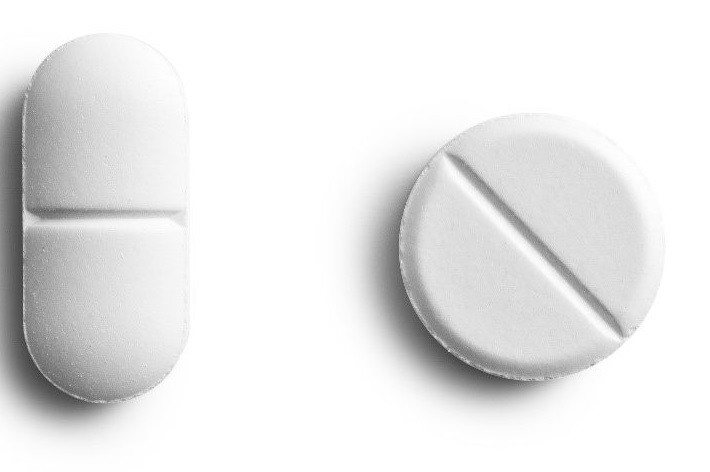Lexatin is a drug used to treat anxiety-related problems, in addition to being used as a muscle relaxant and self-harm reducer.
This drug has a benzodiazepine as its active component, which is not exempt from certain risks, including dependence and tolerance due to making its treatment too long.
Next Let’s see what Lexatin is, its therapeutic purpose as well as precautions, contraindications and interactions of this medicine.
What is Lexatin?
Lexatin is the brand name of a drug prescribed to treat severe anxiety The active ingredient of this medication is bromazepam, a benzodiazepine and among the effects it produces we find that it reduces tension, eliminates nervousness and, at high doses, acts as a muscle relaxant. As it is a benzodiazepine, it can cause high tolerance and dependence, which is why its use should not exceed 12 weeks of treatment, being withdrawn gradually.
There are other drugs on the market whose main active ingredient is bromazepam and, therefore, they can be considered alternative versions of Lexatin. The trade names of other medicines made from bromazepam are Lectopam, Lexomil, Lexotan and Lexotanil

Therapeutic uses of Lexatin: in what disorders is it used?
Doctors and psychiatrists prescribe Lexatin in people who have symptoms of anxiety, tension, depression, nervousness, agitation and who also have difficulty sleeping. Among the problems for which this medicine made with bromazepam we find :
Mechanism of action
Bromazepam is a chemical compound that enhances the effect of gamma-aminobutyric acid (GABA), a neurotransmitter that contributes to feelings of relaxation having sedative, hypnotic, anxiolytic, anticonvulsant potential and functioning as a muscle relaxant.
The active component of Lexatin is a depressant agent of the nervous system that intervenes on the limbic system, which is why it also reduces psychological tension, stress and anguish.
Contraindications
You should not take Lexatin if you are allergic to bromazepam or any other benzodiazepine It should also not be taken if you suffer from serious liver problems or myasthenia gravis, characterized by muscle weakness and fatigue.
It is contraindicated if you suffer from sleep apnea, that is, irregular breathing.
Finally, it is not at all advised in case of drug or alcohol dependence, unless the doctor formally indicates it.
Precautions with this drug
You should consult your doctor or pharmacist If, before starting Lexatin, you have any of the following problems:
Lexatin is made up of a milder benzodiazepine than diazepam and, although bromazepam has a less powerful mechanism of action, it is true that there are certain risks, which is why appropriate precautions must be taken. Lexatin is still a benzodiazepine and, as such, can generate a high degree of tolerance and dependence, so it should be consumed with care following the doctor’s instructions to avoid a negative impact at the organic level.
Treatment with Lexatin should not be stopped abruptly, as it may cause a rebound effect. When the administration of benzodiazepines is stopped, symptoms of restlessness, anxiety, insomnia, headache, lack of concentration and hot flashes may appear, especially if it has been taken for too long. For this reason, it is so necessary that when the time comes to abandon treatment, it should be done gradually.
By inducing relaxation and calming anxious moods, it also There is a risk of poor concentration, reduced attention, reduced reaction capacity and muscle weakness That is why while the patient is being treated with Lexatin he should not perform any task that requires high concentration, such as operating heavy machinery or driving. Likewise, it should be said that these effects are more likely at the beginning of treatment or when the dose is increased.
Lexatin is contraindicated for pregnant women and patients with kidney and liver problems. In these cases, it is recommended to opt for other more appropriate alternatives according to the characteristics and needs of the patient and if there are none, lower doses of Lexatin should be prescribed. Lexatin is excreted in breast milk, so breastfeeding is not recommended during treatment.
Lexatin Side Effects
Like any other drug, Lexatin comes with side effects, which is why it cannot be taken regularly or freely. As with the rest of the benzodiazepines, bromazepam generates tolerance after a few weeks, which means that its sedative and hypnotic effects are reduced as the treatment progresses, which means that it is It may be necessary to increase the dose which, in turn, can generate dependence.
It should be said that most patients tolerate Lexatin well, but at the beginning of treatment some side effects such as confusion, drowsiness, headaches, dizziness, emotional disturbances, reduced alertness, ataxia or lack of coordination, double vision (diplopia), nausea and vomiting, muscle weakness and fatigue. These symptoms usually disappear as treatment continues.
There are many adverse effects associated with this drug, which occur with an unknown frequency but in principle, and as long as Lexatin is consumed appropriately following the doctor’s guidelines, they should not occur. Likewise, as with any other medication, they can occur and may not disappear as the treatment progresses, so Doctor’s supervision is always necessary Among these effects we have the following:
- Anaphylactic shock
- Angioedema (swelling of the face)
- Confusion and disorientation
- Emotional and mood disorders
- Medication abuse
- Withdrawal symptoms
- Depression
- Hyperactivity
- Anxiety
- Drowsiness
- Headache
- Dizziness
- Reduced alertness
- Traumatic injuries: falls and fractures
Interactions
Lexatin is a drug that interacts with other medications. Among them are tranquilizers, sleep inducers, psychotropic drugs, anxiolytics, sedatives and antidepressant agents such as fluvoxamine
It also interacts with opioids, anticonvulsants, and sedating antihistamines. Some antacids (cimetidine) and some drugs for the treatment of high blood pressure such as propranolol can prolong the effect of Lexatin.
During treatment, alcoholic beverages should be avoided and take into account that food consumption may decrease the absorption of bromazepam and, therefore, also reduce the effect of Lexatin.
Overdose
Lexatin abuse and overdose involves serious problems In mild cases it usually consists of drowsiness, mental confusion and lethargy. If high doses have been ingested and combined with other centrally acting substances, it can cause ataxia (inability to coordinate voluntary muscle movements), hypotonia (decreased muscle tone or flaccidity), hypotension (low blood pressure), respiratory depression ( slow breathing), coma and, although rarely, death.









